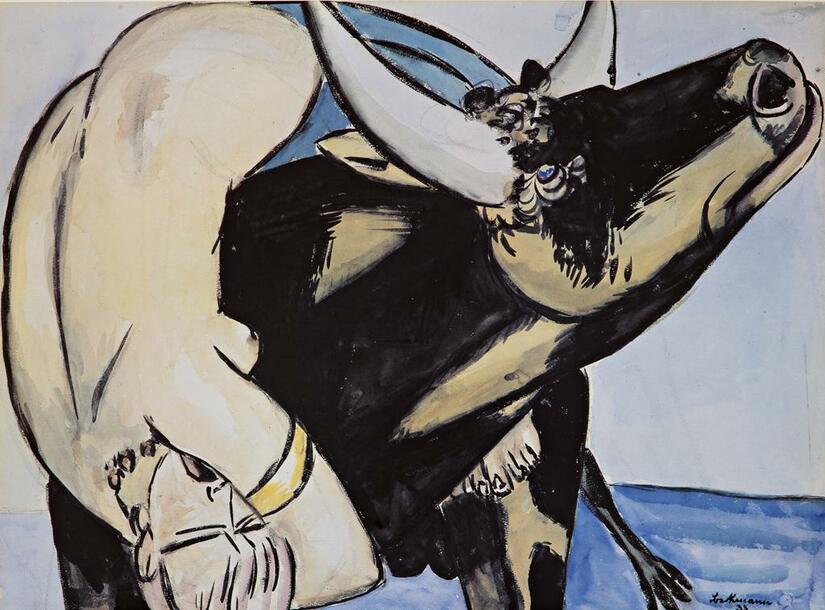Max Beckmann: Der Raub der Europa, 1933 (The Rape of Europa)

Print, 102 x 82 cm
"The Rape of Europa" - the myth that gave our continent its name and is also sometimes used in a simplistic way to refer to the European Union is of course also a must in the art collection of the Europäische Akademie Otzenhausen. Yet in 1933 the countries of Europe were lightyears away from a peaceful coexistence, since the National Socialists' assumption of power was the concrete beginning of the road to the disaster of the Second World War. In this fateful year, Max Beckmann, who had been a professor at the Städelschule in Frankfurt am Main since 1925, also fell victim to the "new era". He reacted to his dismissal without notice in 1933 and his expulsion from Frankfurt with three characteristic watercolors, one of them "The Rape of Europa". He portrays Europa as a desperate woman, who hangs helplessly and almost like a prisoner over the back of a bull, without having any influence on where the aggressive, threatening animal will take her. Beckmann, who comments and anticipates the development in his own way, was one of the most ostracized artists in the Third Reich and was very prominently represented in the exhibition "Degenerate Art" ("Entartete Kunst" = in the Third Reich: exhibition of modern works of art defamed by the National Socialists).
Max Beckmann (*1884 in Leipzig, today Germany, †1950 in New York, USA) was a painter, graphic artist, sculptor, draftsman, portraitist and professor. He took part in the First World War as a medical orderly, but did not fire a single shot there and summarized his war experiences in depressing drawings. In 1915, he suffered a nervous breakdown. He was ostracized by the National Socialists and emmigrated to the USA in 1947, where he managed to resume teaching shortly after his arrival and continued to show exhibitions. Beckmann's own figurative style is inspired by modernism, cubism and also by Pablo Picasso.